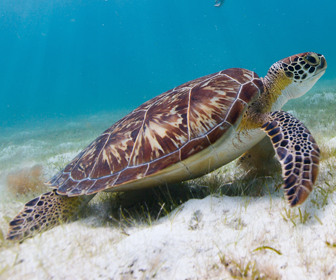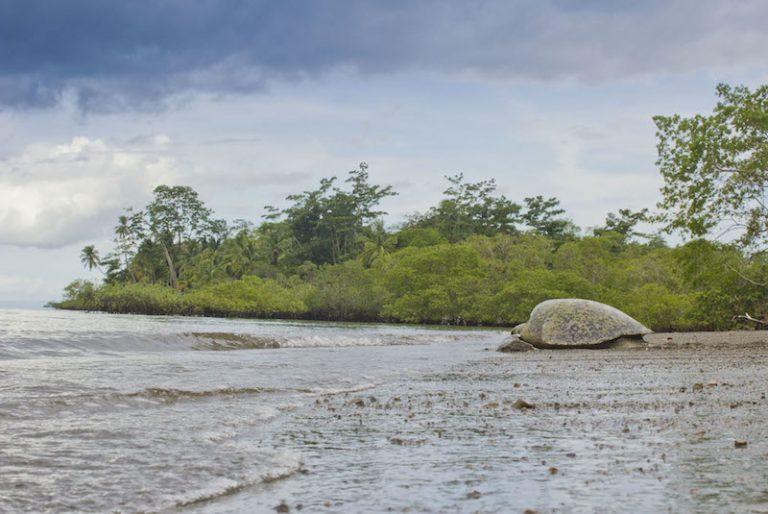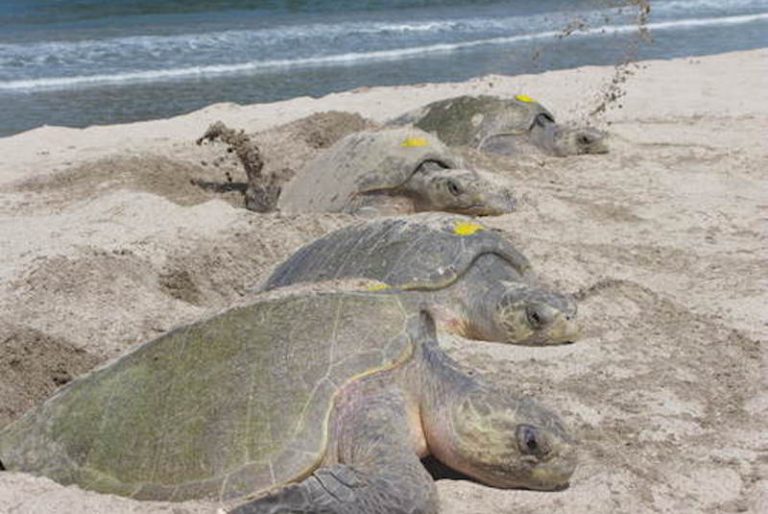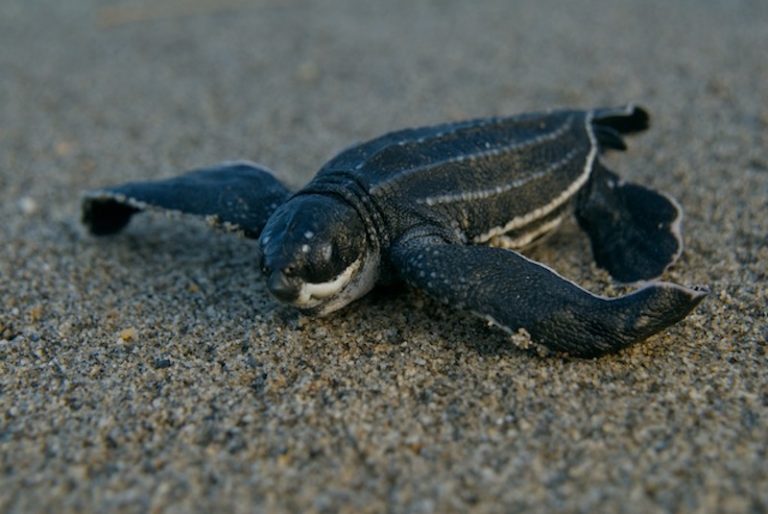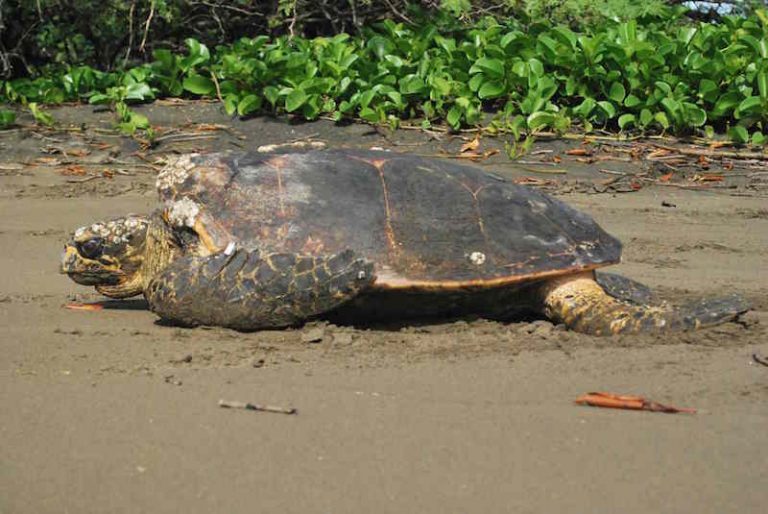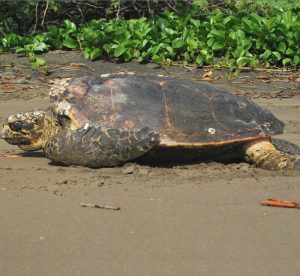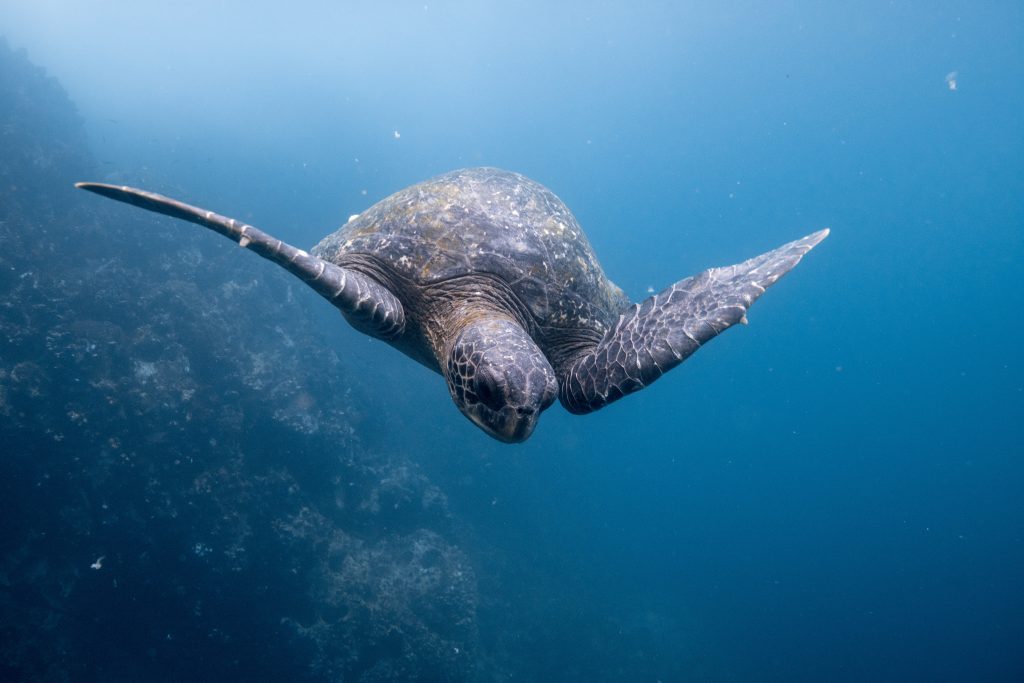Sea Turtle Volunteering in Costa Rica
Sea Turtle Volunteering in Costa Rica
There is a good reason why people from around the world are interested in sea turtle volunteering in Costa Rica. The popular Central American nation is home to a number of sea turtle nesting beaches. Along both the Pacific and Caribbean coasts, visitors can join sea turtle volunteering programs helping to save four different species of sea turtle – Leatherback, Hawksbill, Olive Ridley, and Green sea turtles.
Leatherback Sea Turtles:
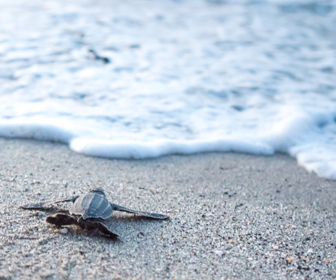 When to go sea turtle volunteering in Costa Rica with Leatherbacks? Leatherback nesting season runs from October – March in the Pacific and from February – July in the Caribbean. Hatching season occurs December – May in the Pacific and April – September in the Caribbean.
When to go sea turtle volunteering in Costa Rica with Leatherbacks? Leatherback nesting season runs from October – March in the Pacific and from February – July in the Caribbean. Hatching season occurs December – May in the Pacific and April – September in the Caribbean.
Where in Costa Rica? Leatherbacks tend to nest at Playa Grande in the Pacific and Tortuguero, Gandoca and Parismina in the Caribbean.
Why? Leatherbacks are the largest sea turtle species and are some of the largest reptiles in the world. Adults can weigh between 500 and 2000 pounds and can grow up to 8 feet long! Leatherback sea turtles are easily distinguished by their flexible and soft shell. This shell enables them to dive deeper than any other sea turtle. Want to know more about Leatherback Sea Turtles? Click here.
How?
Hawksbill Sea Turtles:
When to go sea turtle volunteering in Costa Rica with Hawksbill sea turtles? Hawksbill nesting season runs from May to March in the Pacific and from May to August in the Caribbean. Hatching season occurs year round between the two places.
Where in Costa Rica? Hawksbill nest at Corcovado, Ostional, Las Baulas in the Pacific and Tortuguero in the Caribbean.
Why? Hawksbills are widely known as the most beautiful sea turtles because of their recognizable, colorful shell. Hawksbills are found around the world, can weigh up to 200 pounds and grow up to 3 feet long. Named for their narrow heads and almost bird-like beak, Hawksbills feed mainly on sea sponges. Because of this, the species is crucial to the survival of reef systems, as they remove the abundance of sponges that would otherwise crowd out the coral. Hungry for more info about Hawksbill Sea Turtles? Click here.
How?
Olive Ridley Sea Turtles:
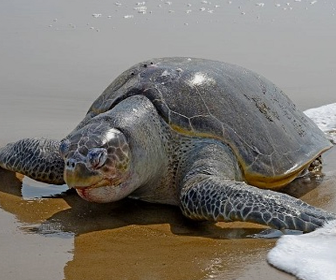
When to go sea turtle volunteering in Costa Rica with Olive Ridley sea turtles? Olive Ridley nesting season runs year-round in the Pacific, peaking in July to December. Hatching season also occurs year round, but peaks from September to February.
Where in Costa Rica? Olive Ridleys will nest at Playa Ostional as well as near Santa Rosa National Park.
Why? Olive Ridleys are mainly known for their amazing nesting behaviors. They’ll nest in groups of up to 100,000 in a process is called “arribada” meaning “arrival” in Spanish. Arribada in Costa Rica occurs on the beaches of Ostional and Nancite. Looking for more info about Olive Ridley Sea Turtles? Click here.
Green Sea Turtles:
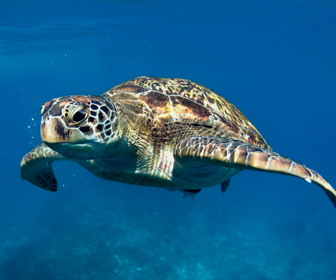
When to go sea turtle volunteering in Costa Rica with Green Sea Turtles? Green turtle nesting season runs year round in the Pacific with peaks from October to March. In the Caribbean, nesting season runs from June to November. Peak hatching season occurs December to April in the Pacific and August to December in the Caribbean.
Where in Costa Rica? Green turtles nest at Ostional and Las Baulas in the Pacific and Tortuguero, Parismina and Gandoca in the Caribbean
Why? Green Sea Turtles are the second largest species of turtle. They can weigh up to 500lbs and grow up to 4 feet long! They are named for their fat, not their shells, and are the most common sea turtle that people see around the world. Green sea turtles are found most commonly on the beaches of Costa Rica’s Tortuguero. Itching to know more about Green Sea Turtles? Click here.
How?
Get on board a Green Sea Turtle Research Trip!
The tourism industry is both helpful and harmful to Costa Rica’s ecosystems and turtle populations. Purchasing souvenirs like a turtle shell, or often called “tortoiseshell” jewelry and other pieces, is particularly harmful, as this comes from the endangered Hawksbill sea turtle.
But this is where you can help:
- Choose not to purchase goods from vendors that sell turtle shell items.
- Don’t touch turtles when snorkeling and stay away from sunscreens that contain oxybenzone.
- Join a sea turtle volunteering in Costa Rica, or chose a responsible animal-friendly tour to learn more about the species and make a big impact on their survival.

